 John Mata Jr.
.
March 04, 2024
.
F Series Builders Guide
John Mata Jr.
.
March 04, 2024
.
F Series Builders Guide
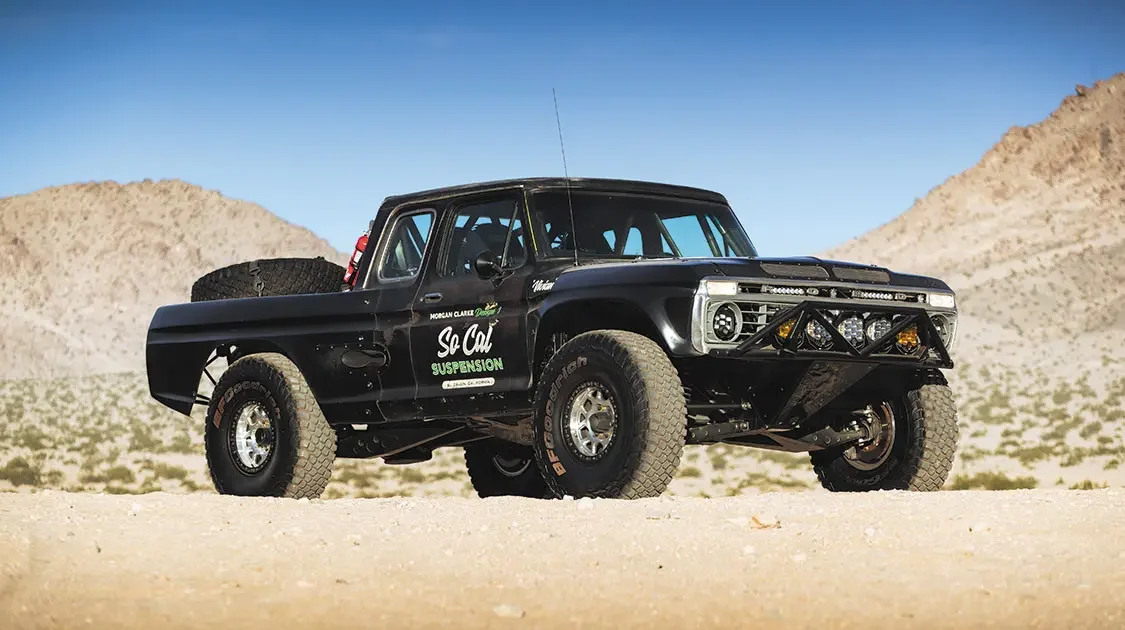
Photos by Evan Walsh
Folk who have a passion for extreme sports have a tendency of carrying that same excitement into whatever other activities they choose to partake in. There must be something imbedded into one’s DNA that craves that action, speed, and all things that cause high spikes of adrenaline. Whatever the scientific cause of this is, Eric Conner, who was a professional street-style skateboarder back in his youth during the ’90s, has experienced long-term effects that go along with wanting to land the next big trick in life.
“Since Eric doesn’t spend as much time on a board these days, he has since changed his focus to all things that revolve around building custom vehicles and off-road racing.”
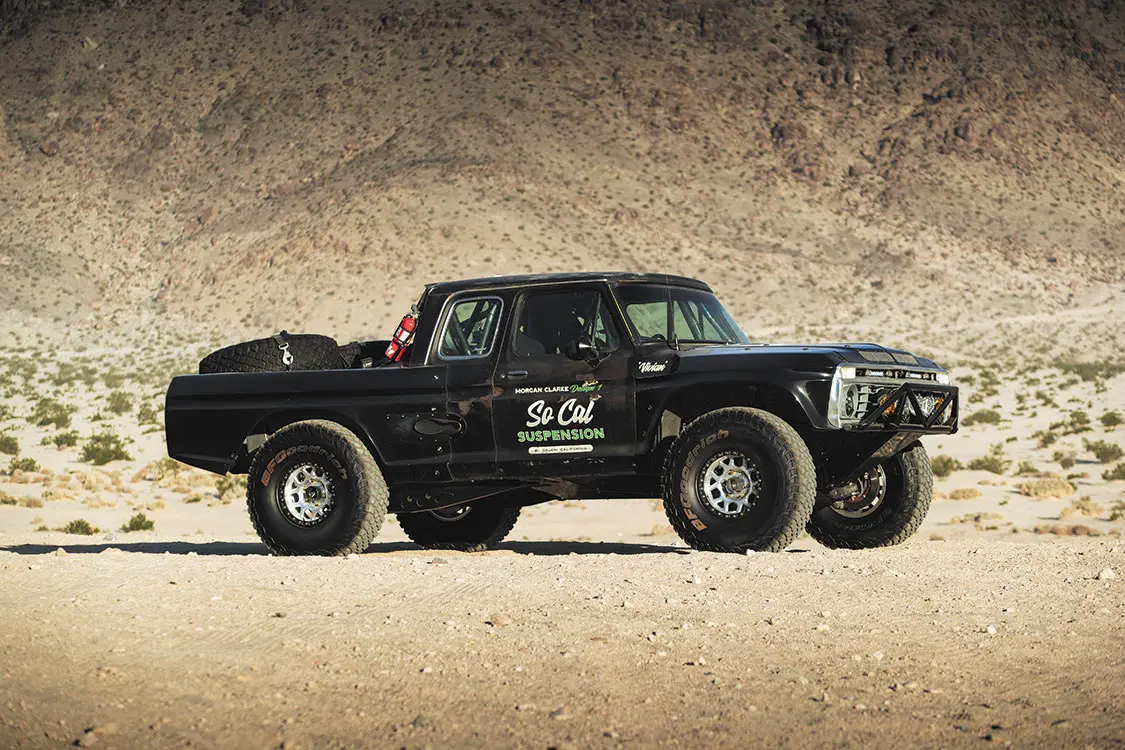
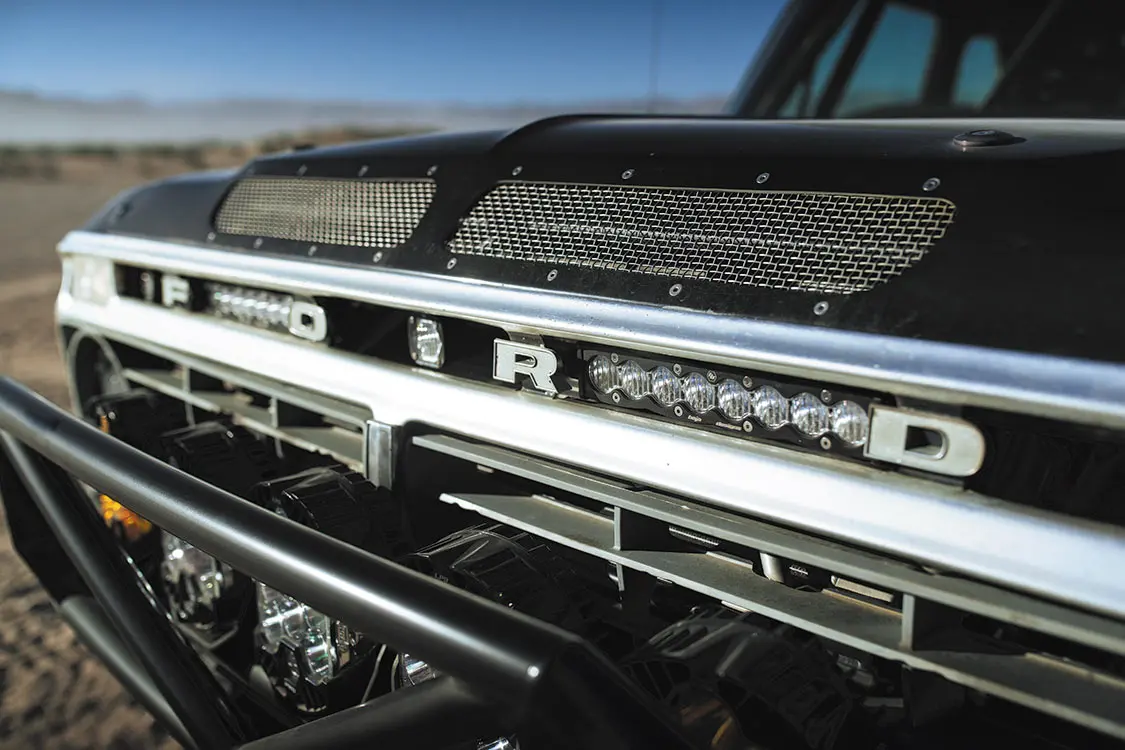
Since Eric doesn’t spend much time on a board these days, he has since changed his focus to all things that revolve around building custom vehicles and off-road racing. Technically, he still gets his kicks on four wheels, but the stakes have increased dramatically. Eric has owned and operated SoCal Suspension, which has serviced the lifted-truck community in his hometown, for the last 20-plus years. Business is always a struggle no matter the industry, but Eric has stayed true to the grind and has reached a place where the tides have seemed to calm enough for him to make a big step into something that would score a huge personal and professional win.
“After taking a long look at the mid-’70s F-100s Eric was drawn to and comparing them to his Tundra, Morgan suggested swapping a Ford cab onto the Toyota’s existing beefy frame.”
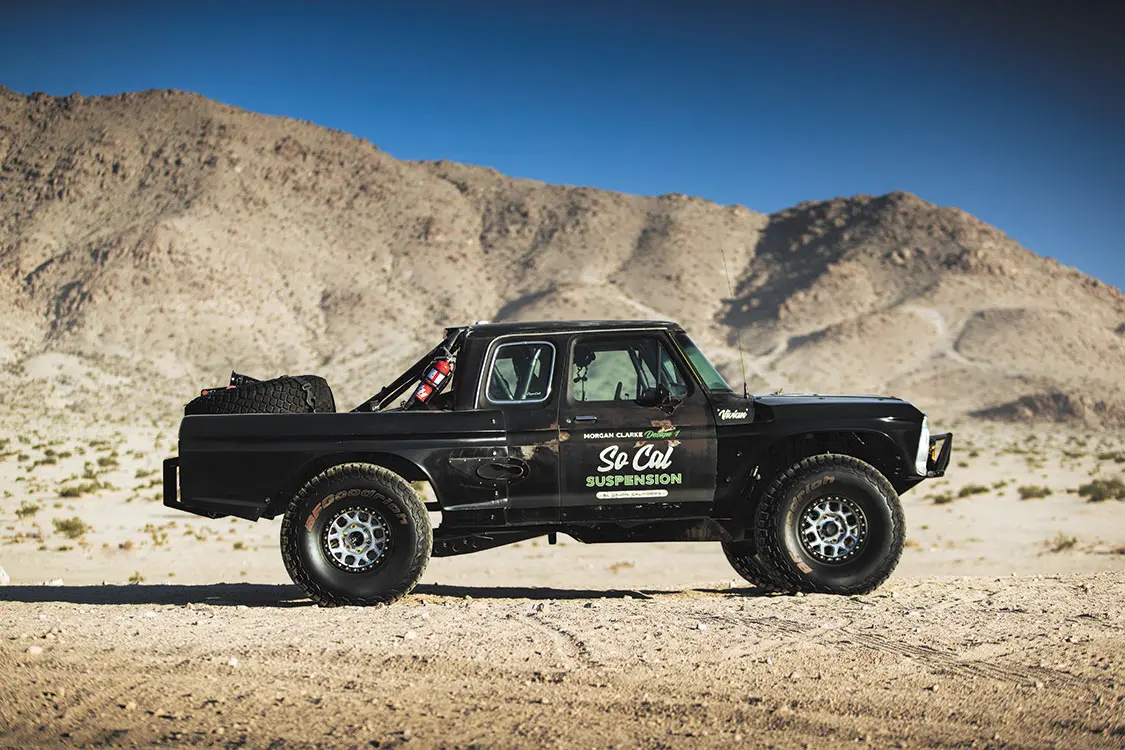
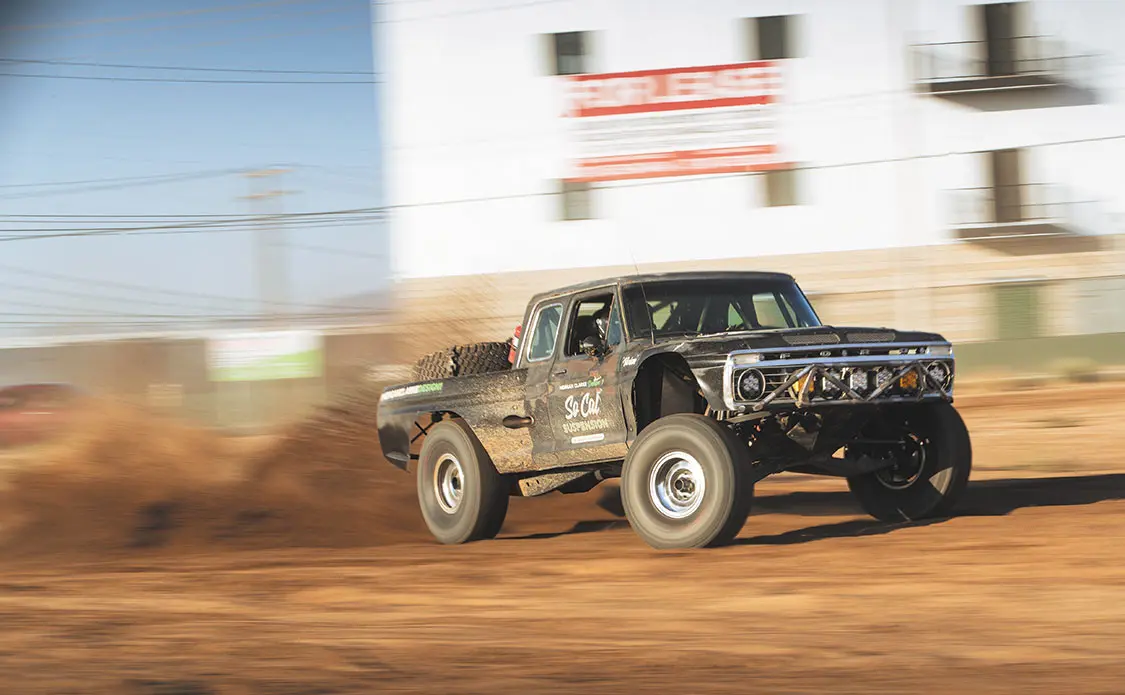
Eric had built a radical Toyota Tundra that was set up for hardcore off-road racing. This truck evolved so much over time and was an absolute blast to drive—but after rolling it, he figured it a great time to do something with another vehicle. His taste for something aesthetically different was starting to become too distracting to put off any longer, anyway. Eric wanted to build a significantly older Ford truck into a legitimate prerunner to replace his Tundra, so he reached out to Morgan Clarke Design (MCD1) to assist in figuring out if such a project could even work. Together, the two weighed out a ton of potential options to make it happen but one crazy idea stood out to be the most viable of them all.
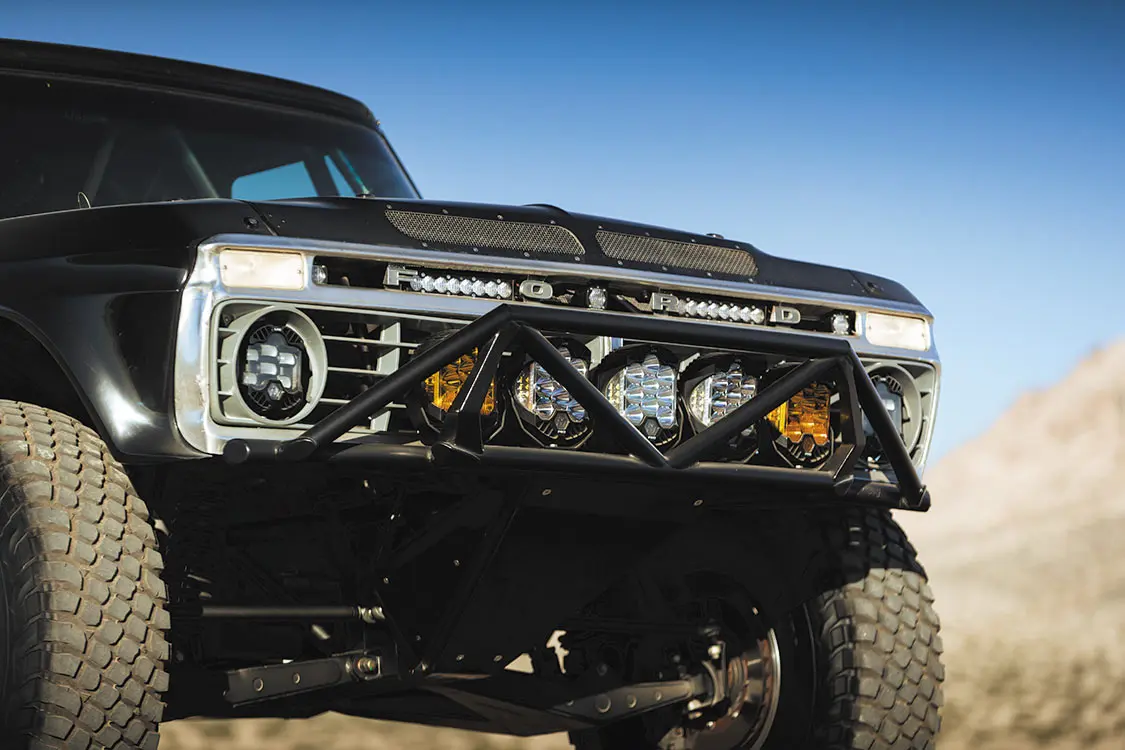
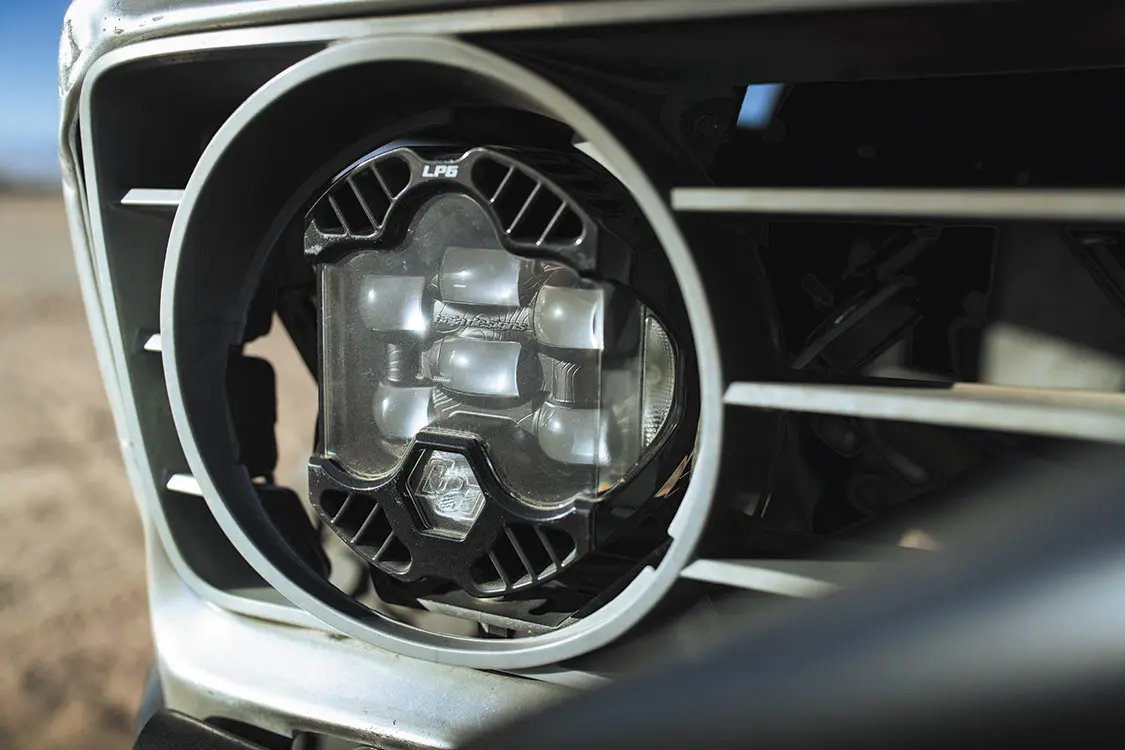
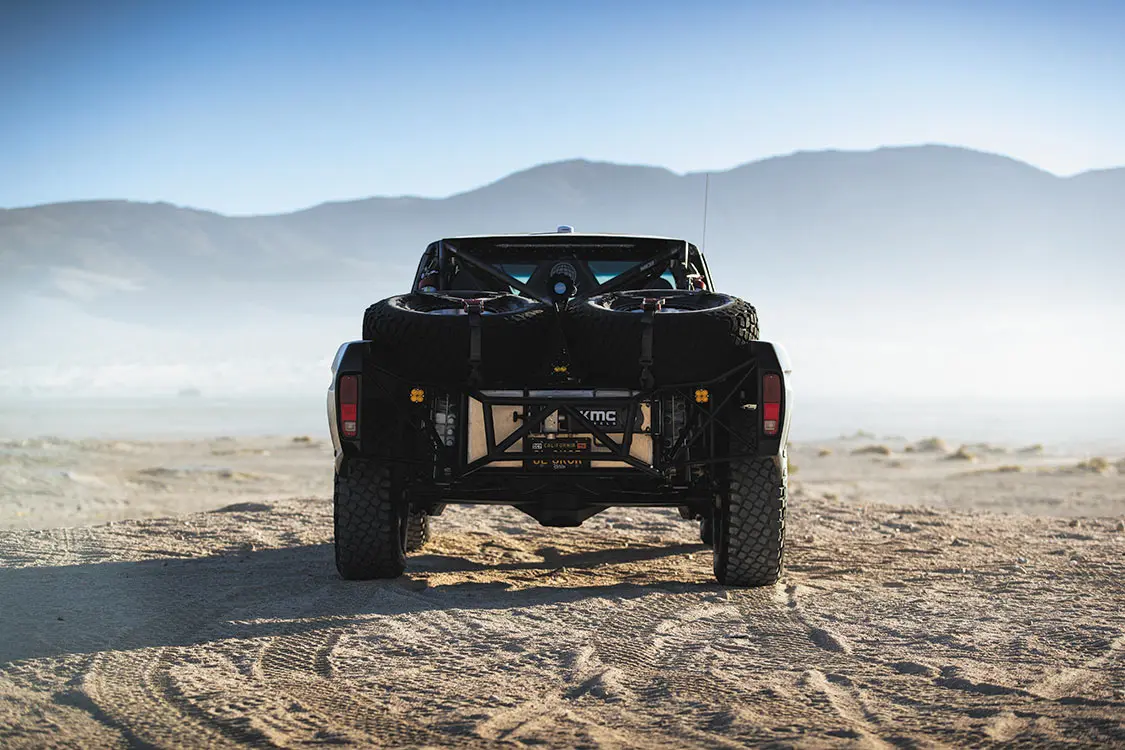
After taking a long look at the mid-’70s F-100s Eric was drawn to and comparing them to his Tundra, Morgan suggested transferring a Ford cab onto the Toyota’s existing beefy frame. It could work, but of course, it wouldn’t be as easy as it sounds. Eric was down to see the transformation unfold, but he was aware that the job was going to get expensive. On the other hand, committing to the project and trusting the process posed too cool of an opportunity to let pass by. After a few brainstorming sessions, Eric soon gave Morgan full reign on the rebuild. What was to come was much more than just a replacement prerunner truck. Once the terms “military-spec” and “trophy truck” started floating around, the guys knew they were in for quite a ride.
“To further allow the F-100 to glide through unpredictable terrain, a combination of 17×10 KMC forged Mesa beadlock wheels with 40×12.5 BFG Baja T/A KR3 tires was selected.”
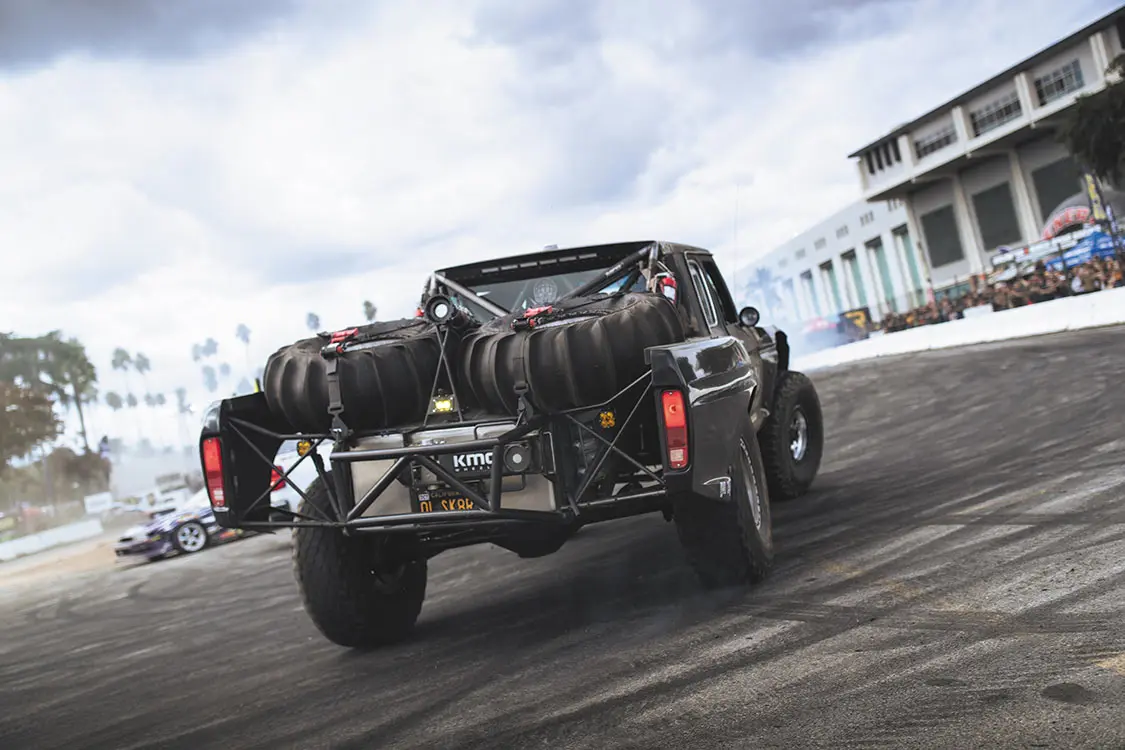
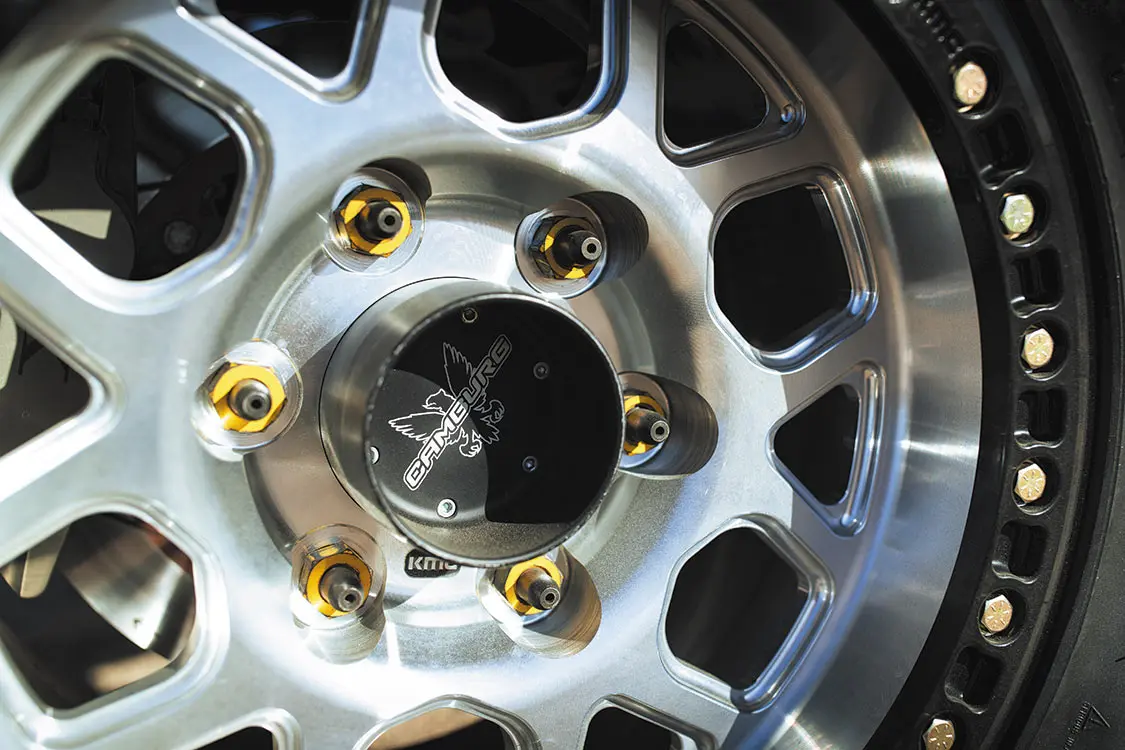
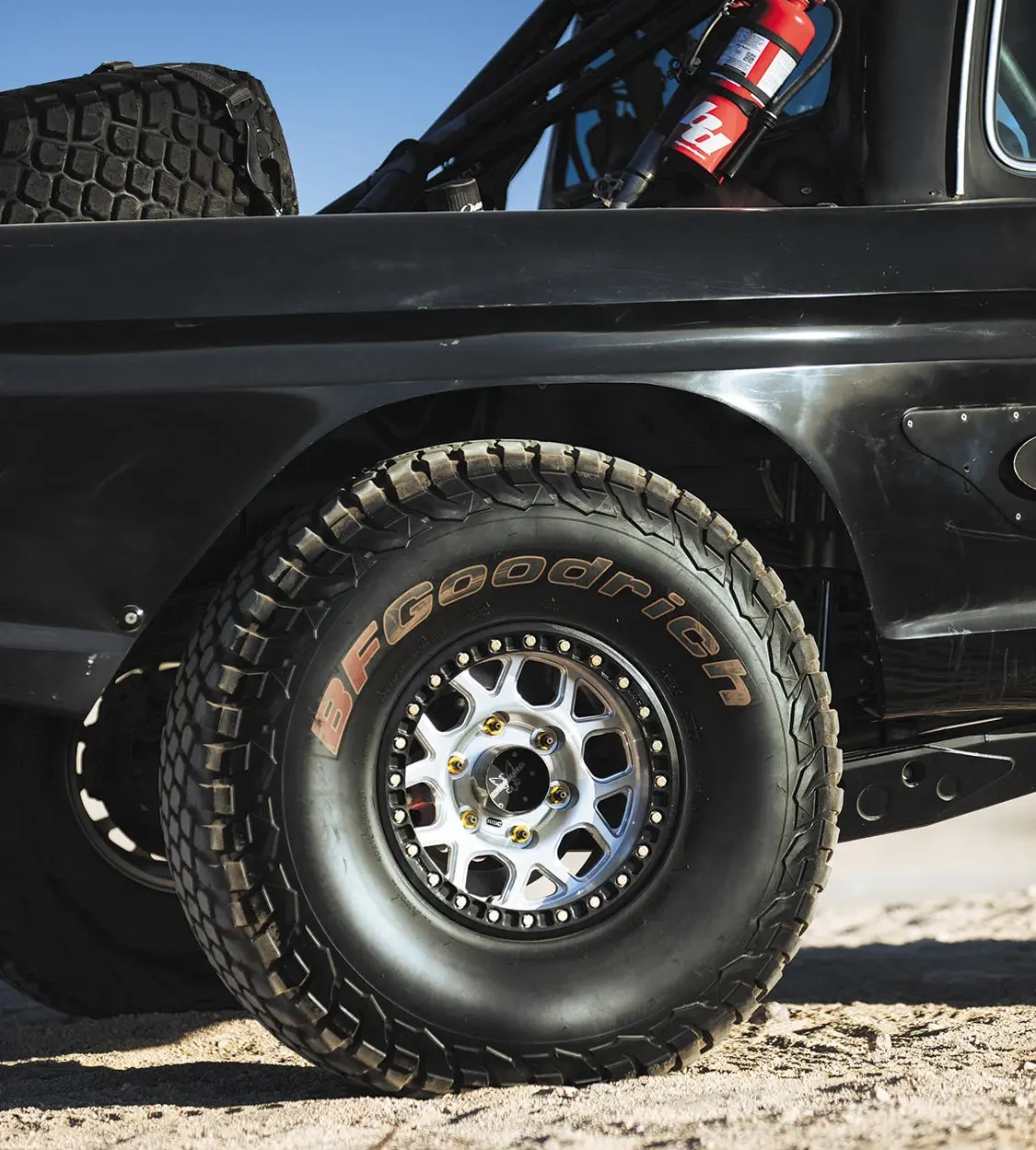
One the Tundra cab was properly cut free and removed from the chassis, Morgan first began by making sense of the existing system, and then started fabricating a network of structural metal tubing to create a bulletproof cage around the engine and within the Ford cab. Taking the platform back to this stage allowed Morgan and the MCD1 team to design points in the infrastructure that would allow a much easier cab swap in the case of the truck rolling again. Nobody wishes to see that happen, but it’s better (and easier) to be safe than sorry. Once the bed was mocked up, removable bedside mounts were also fabricated, as were front and rear tub assemblies to make replacing or repairing damaged panels less of a pain.
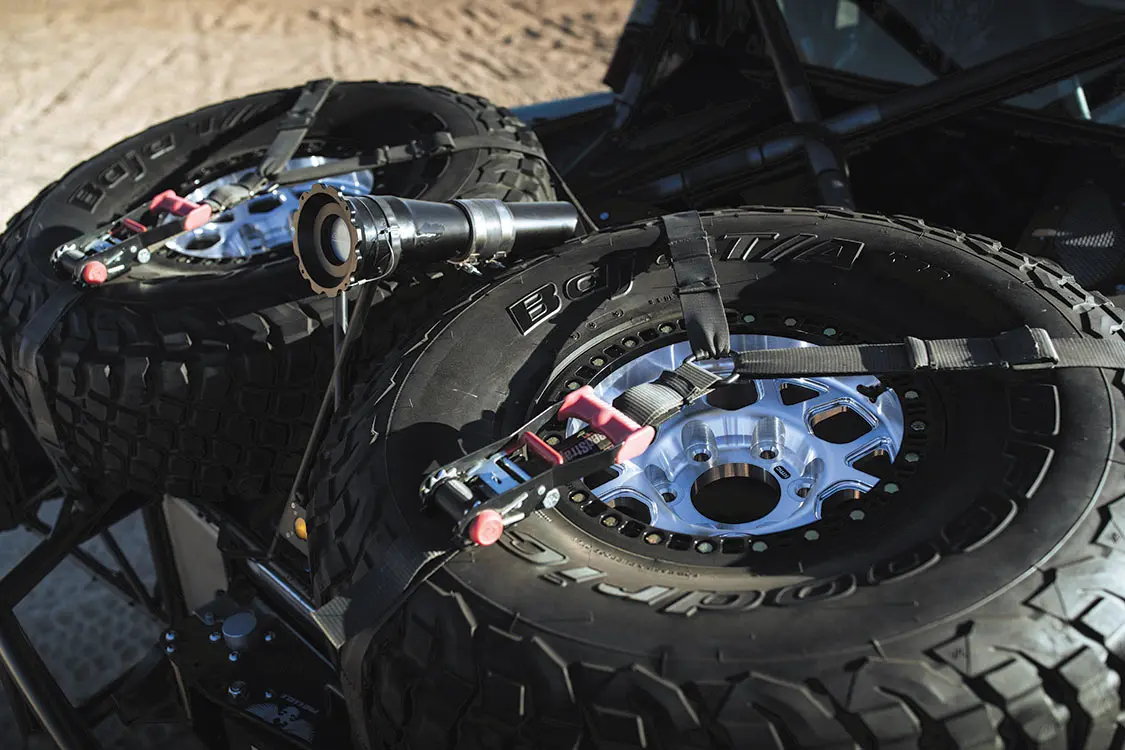
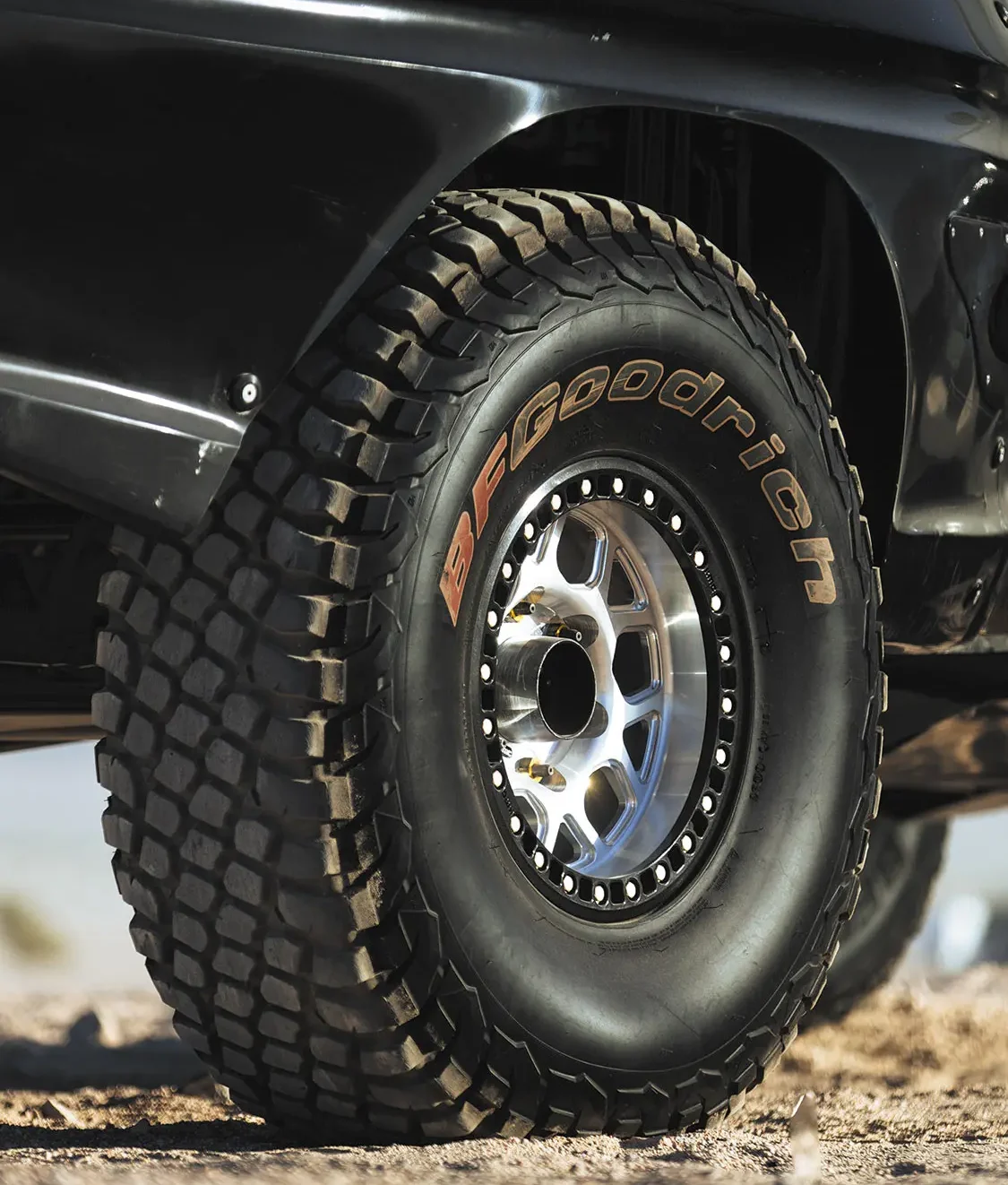
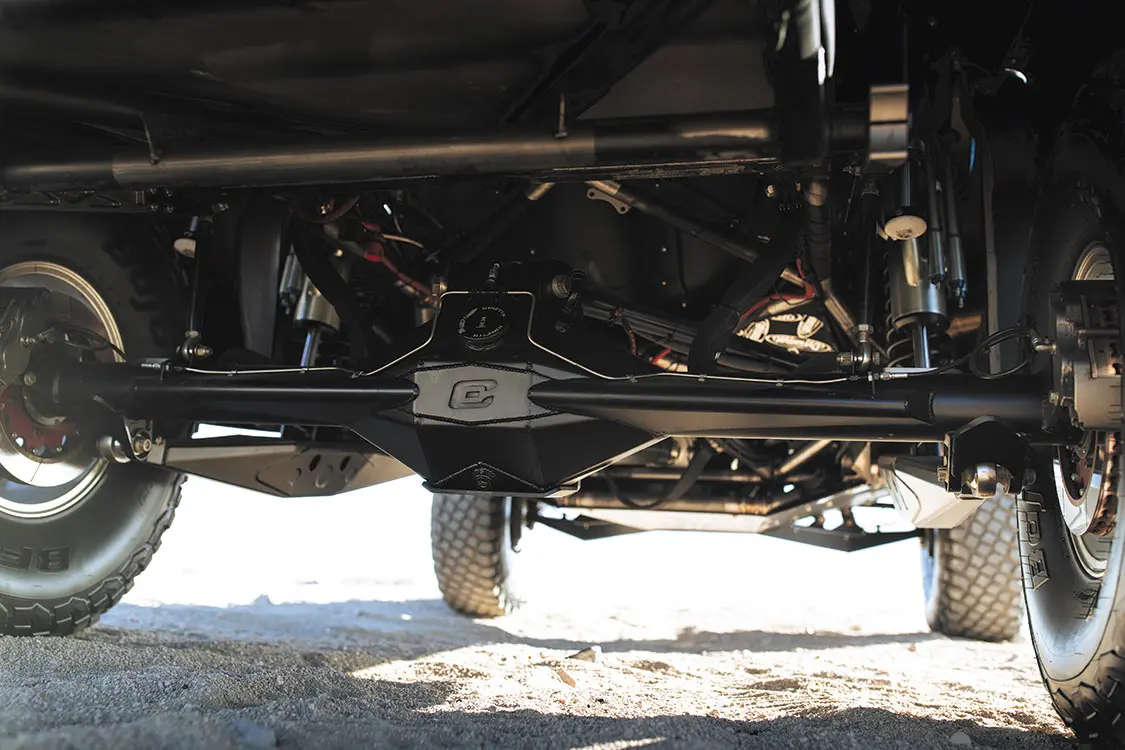
With deeps roots in the SoCal custom auto culture, Morgan took a move from the mini-truck playbook by performing a 4-inch bodydrop in order to position the bottom of cab and bed to sit flush with the bottom of the frame rails instead of inches above it. This will give the truck a better center of gravity when everything is buttoned back up. The updated front suspension system features a custom center pivot, double wishbone with J-Arm and features 24 inches of travel as per trophy truck spec. At the rear, a triangulated 4-link, sway bar, and a full yard of travel give the chassis a full range of articulation for it to perform at its peak potential. Fox coilovers have also been added to smooth out the ride as much as possible, which is of utmost importance when attacking the dunes at top speed.
“Taking the platform back to this stage allowed Morgan and the MCD1 team to design points in the infrastructure that would allow a much easier cab swap in the case of the truck rolling again.”
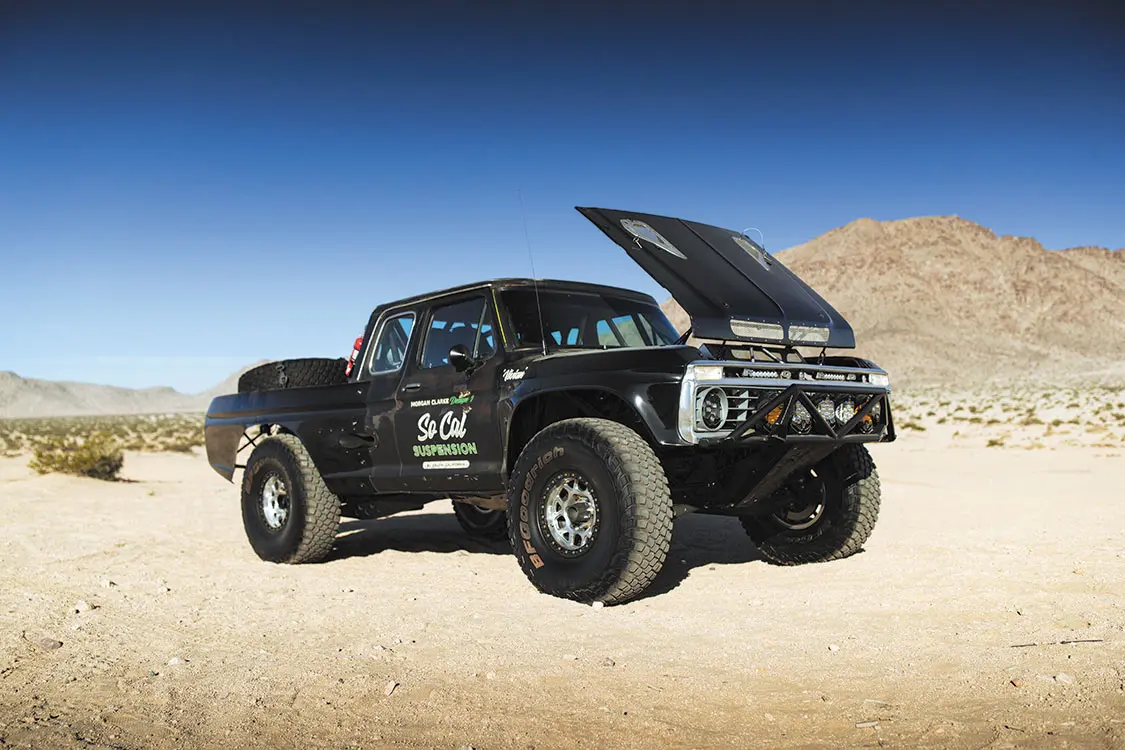
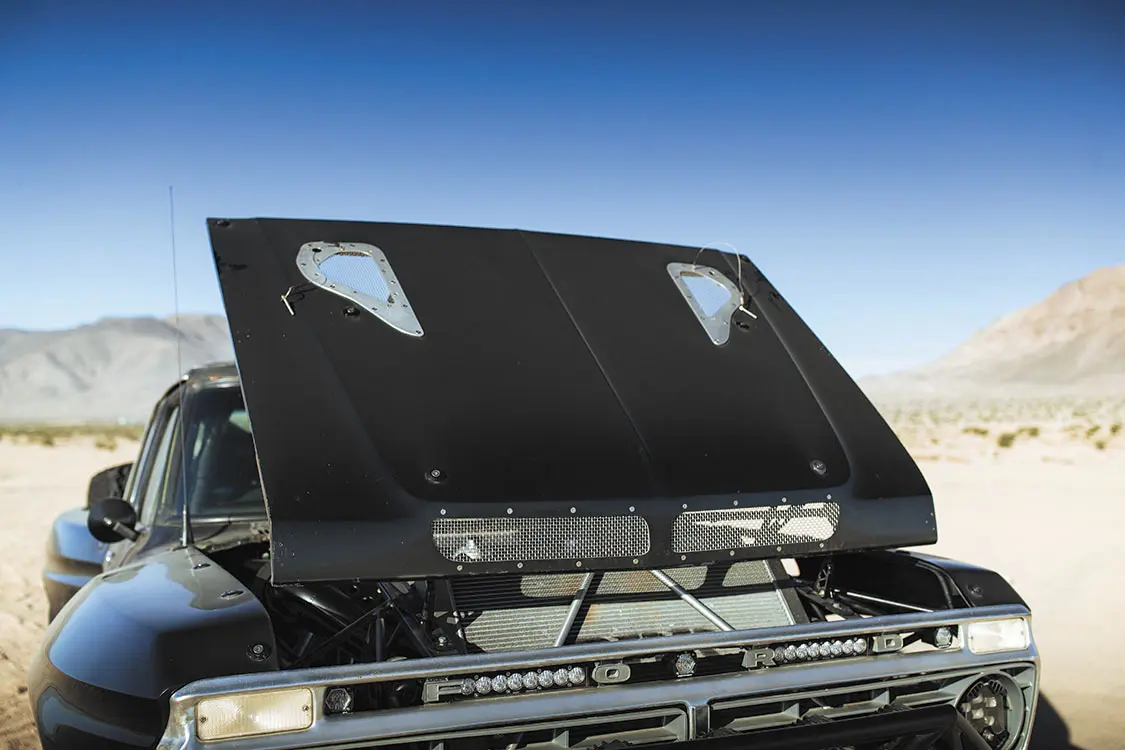
In the end, 43 inches of the original Toyota frame was utilized, while 4130 chromoly TIG-welded tube stock makes up the rest. The F-100 body forced Morgan to bring the wheelbase down to 124 inches, which was his ideal configuration for a truck of its proposed purpose and stature.
To further allow the F-100 to glide through unpredictable terrain, a combination of 17×10 KMC forged Mesa beadlock wheels with 40×12.5 BFG Baja T/A KR3 tires was selected. To help bring the truck to a firm halt, JMR 6-piston front and rear brake kits have been assembled and installed. Protecting the undercarriage from unforeseen, damaging debris is an MCD-1 side-to-side skid plate that goes all the way up to the front bumper.
“With deeps roots in the SoCal custom auto culture, Morgan took a move from the mini-truck playbook by performing a 4-inch bodydrop.”
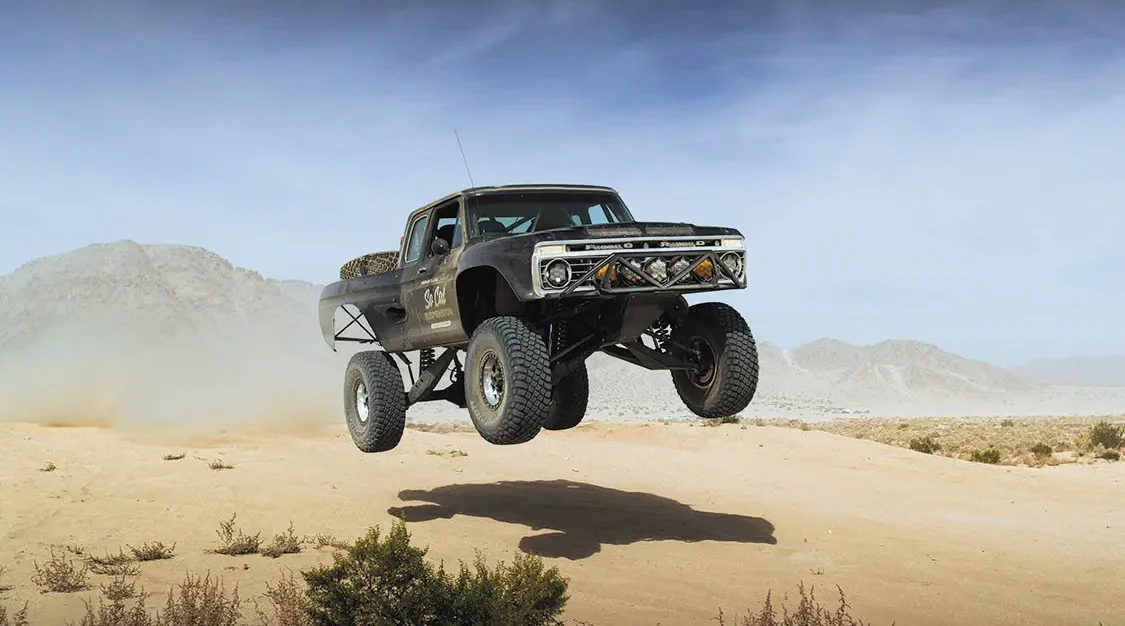
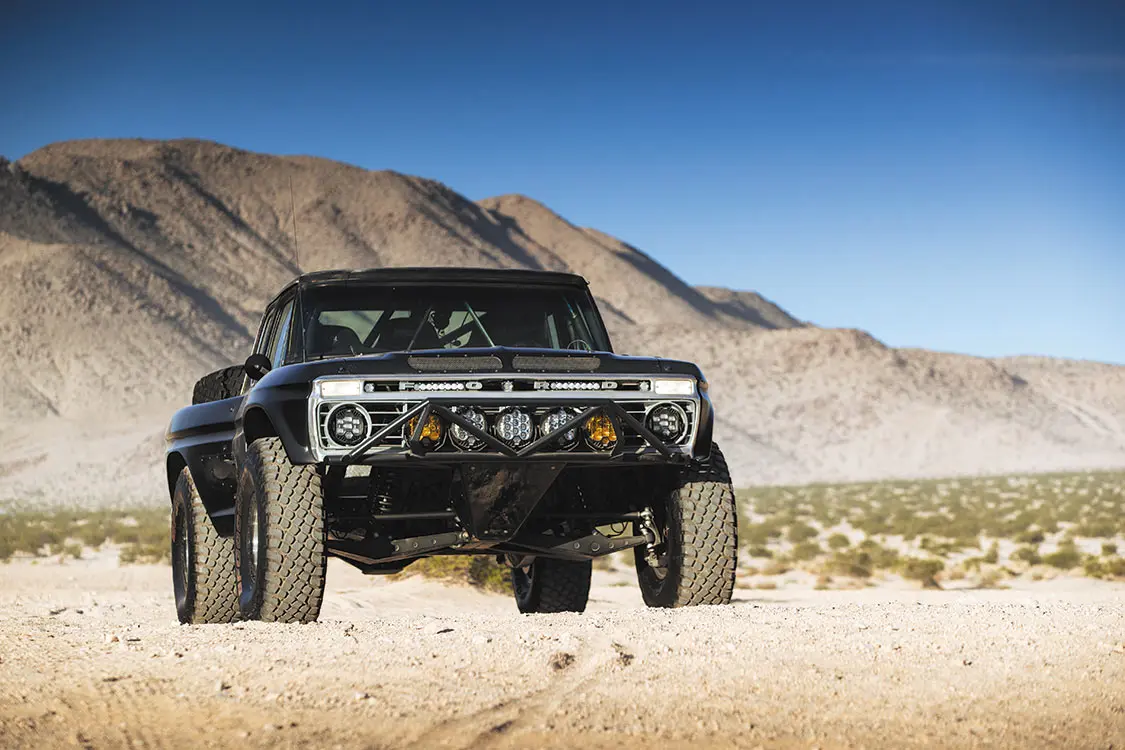
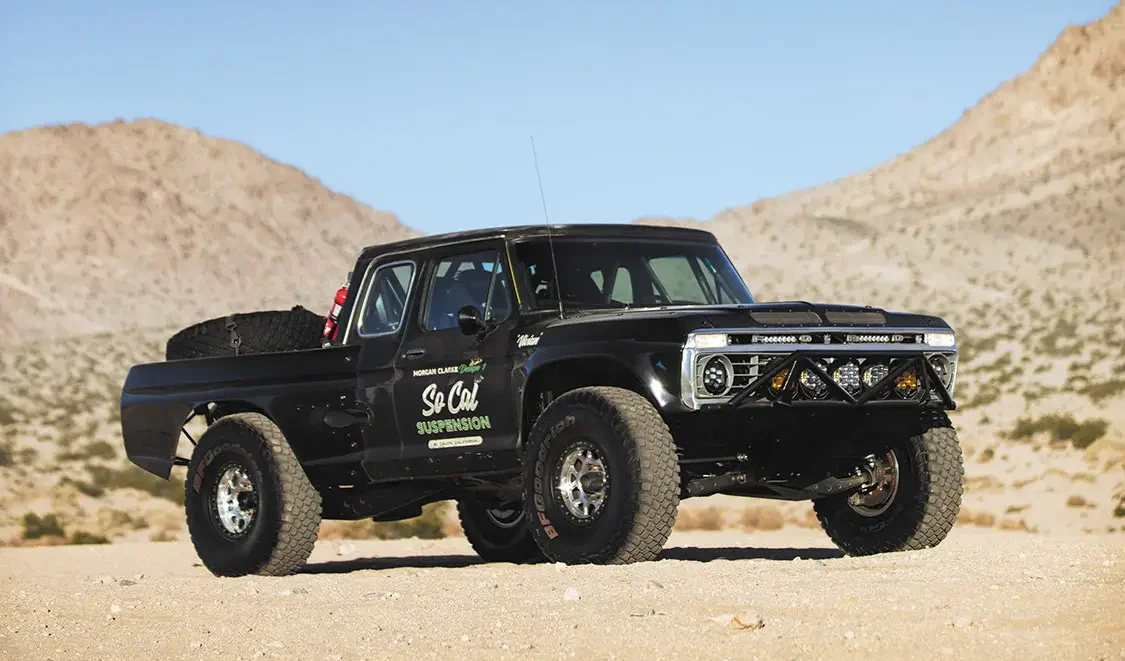
Powering Eric’s Ford through the desert is a brand new 460ci V-8 from Moruzzi Race Motors in Banning, California. The mill was soon outfitted with an Edelbrock intake manifold and Holley Terminator fuel injection and ignition systems. A one-off MCD1 3.5-inch exhaust setup with a 4-inch exit through the cab wall below the side window makes for an aggressive growl and a unique exterior exhaust port. Keeping the engine as cool as possible was a top priority, and to help with that, steam ports were modified, and a gargantuan 8×20-inch oil cooler was put into place.
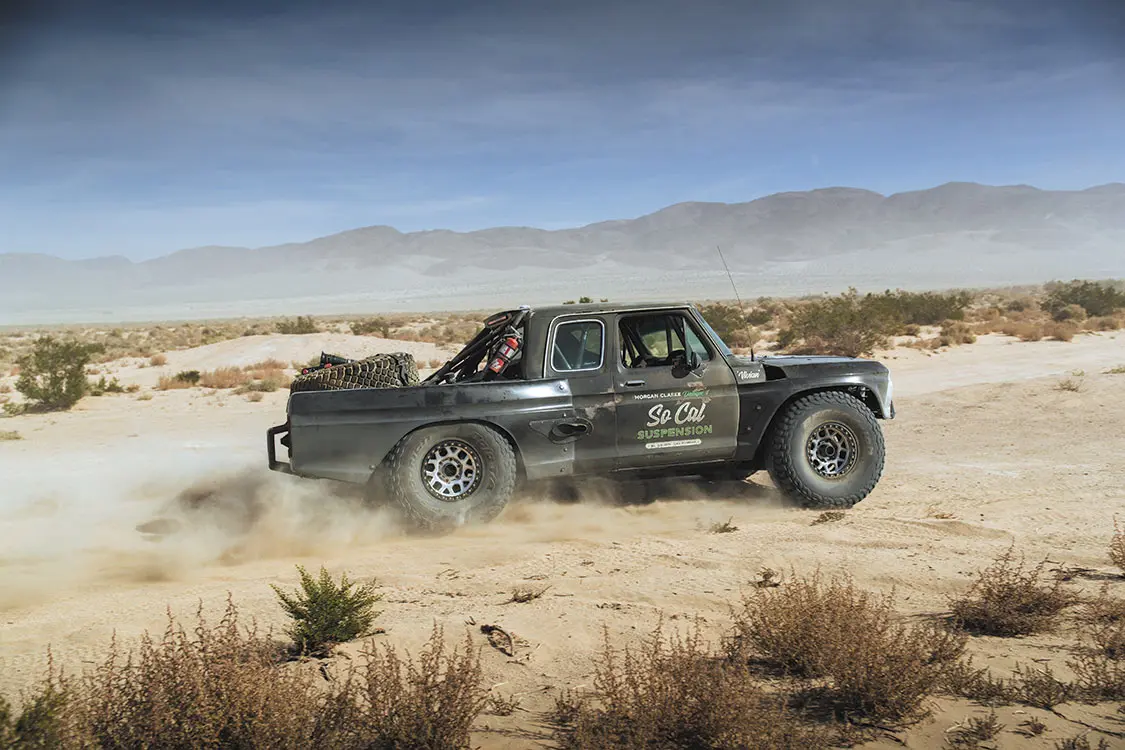
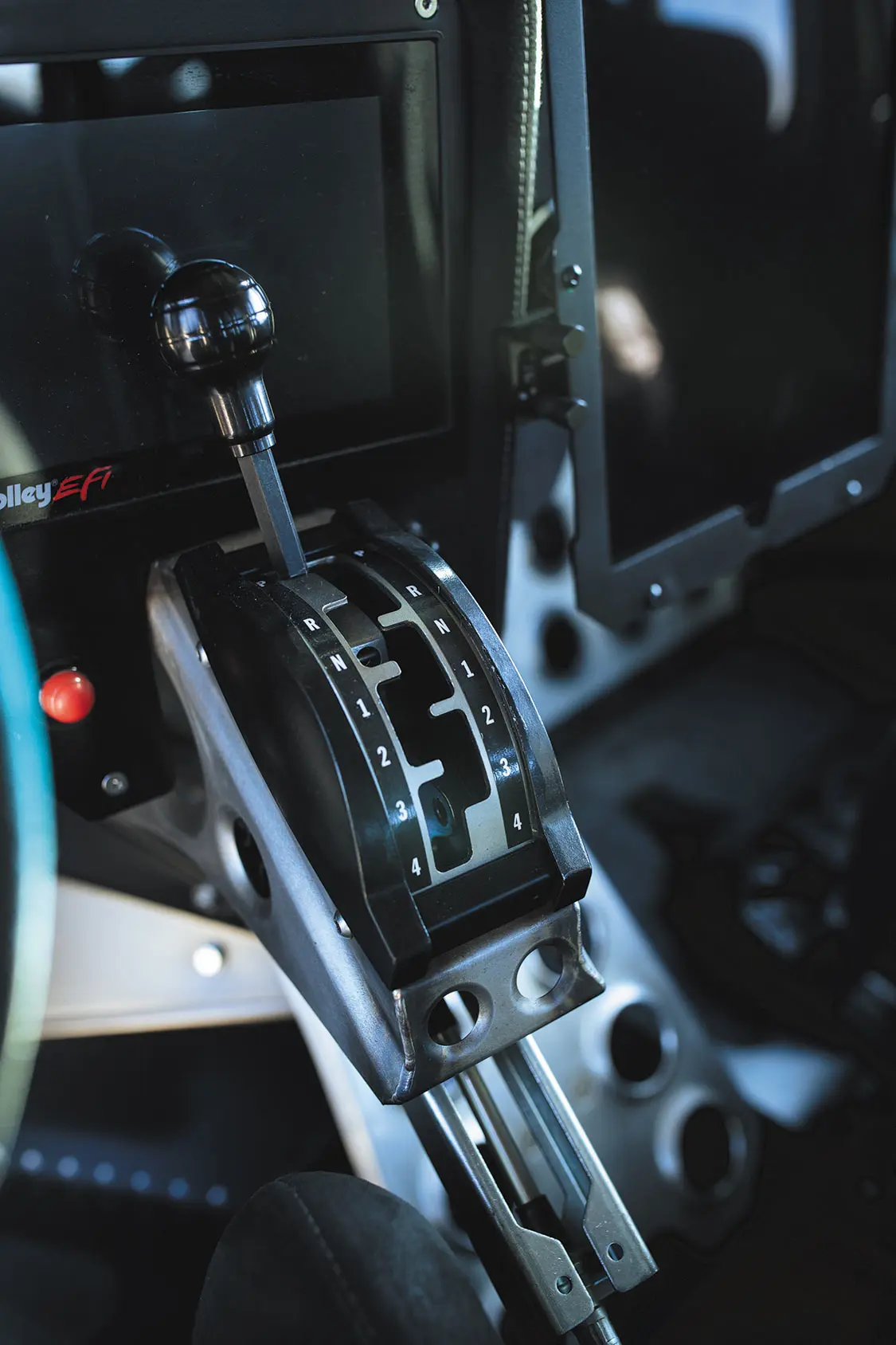
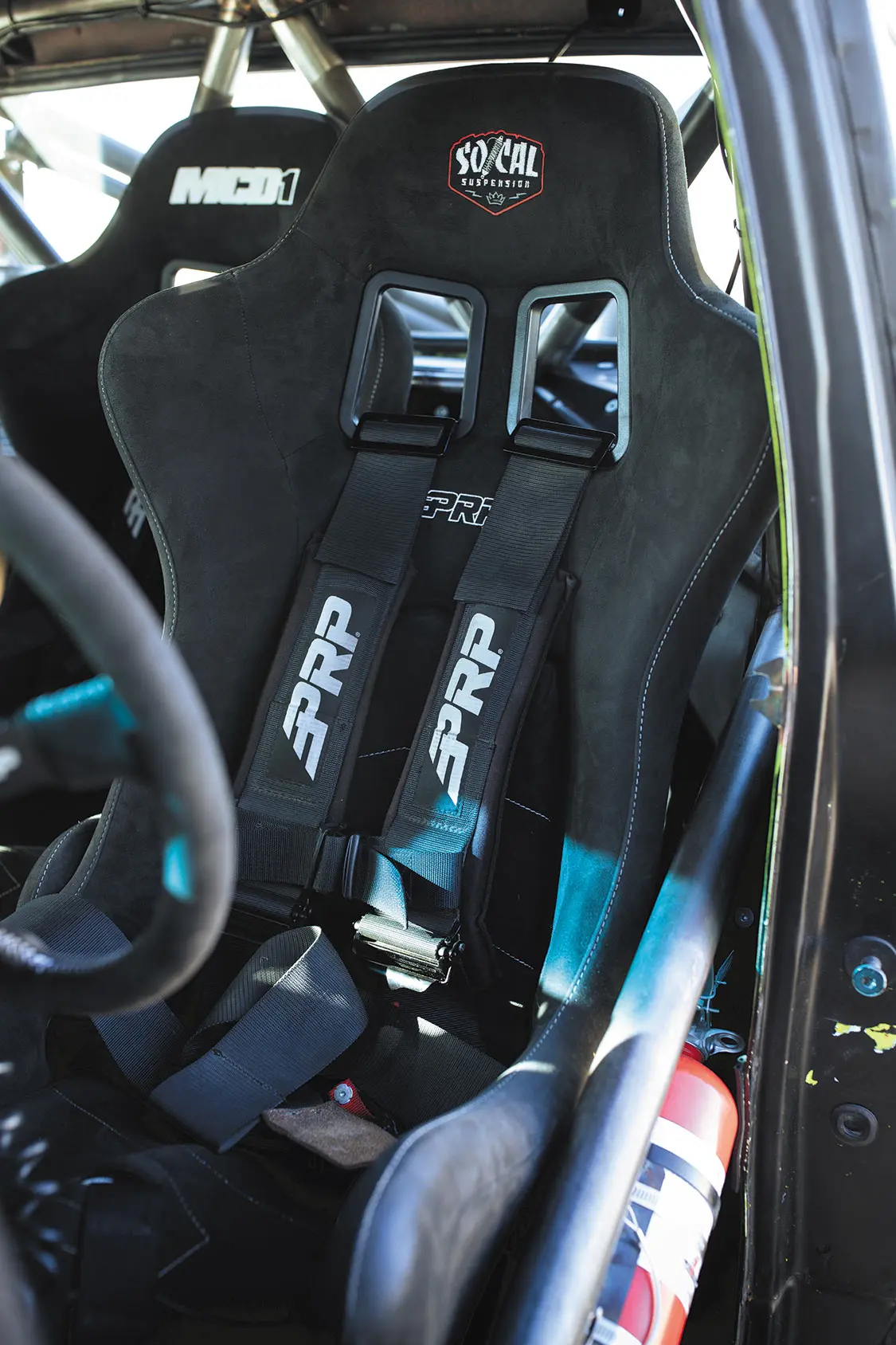
The Ford was left in its natural patina finish just as Eric wanted. Mario Cazares hand-sculpted front fenders produced by FiberwerX were included into the truck’s new body design, as were McQueen prototype bedsides and hood to give the F-100 a complete look while adorning it with properly fitting armor for its upcoming adventures. Looking into the bed reveals a collection of custom aluminum panels and vents that Morgan and crew designed to elevate the truck’s raw and rugged demeanor.
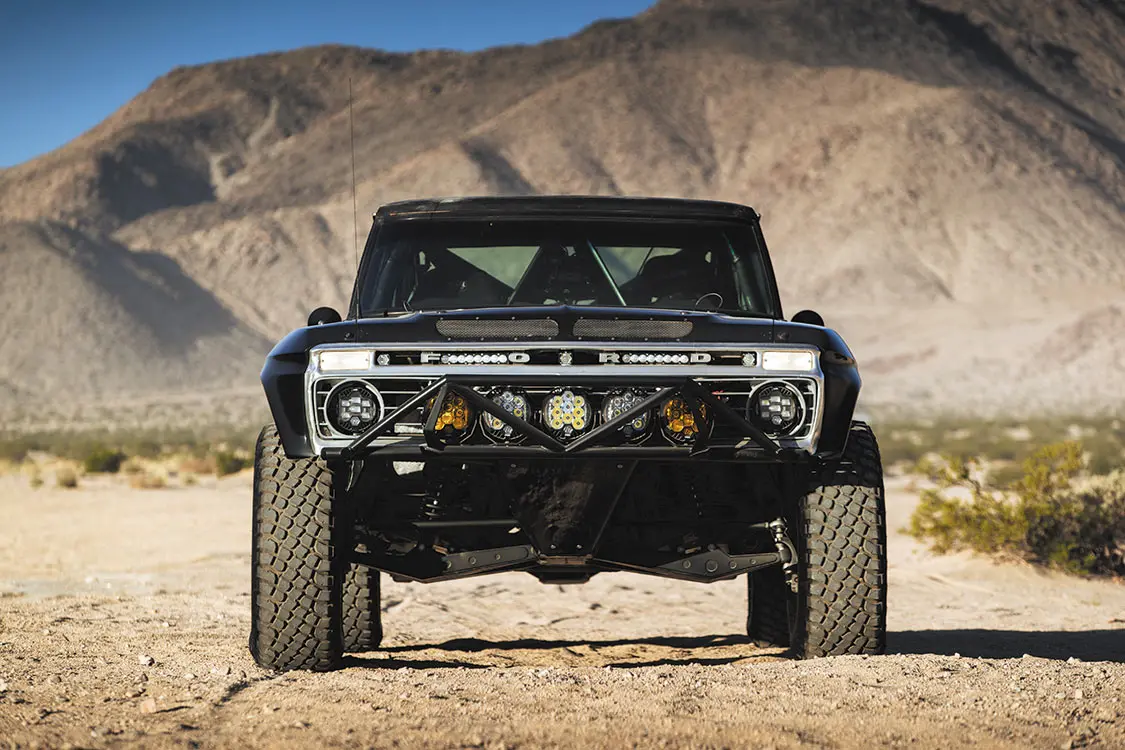

In fact, the interior was also decked out with matching MCD1’s aluminum handiwork with the incorporation of even more panels along with dimple-die accents throughout. Further visual styling comes in the form of a suede clad FiberwerX dash, custom door cards, and three PRP Alpha Composite seats designed special for this project. Holley instrumentation, a PCI race radio with intercom and headsets, a digital rearview mirror, an sPOD control pad for electronic accessories, and a PRP steering wheel round out other notable amenities found inside the F-100’s cab.
“Further visual styling comes in the form of a suede clad FiberwerX dash, custom door cards, and three PRP Alpha Composite seats designed special for this project.”
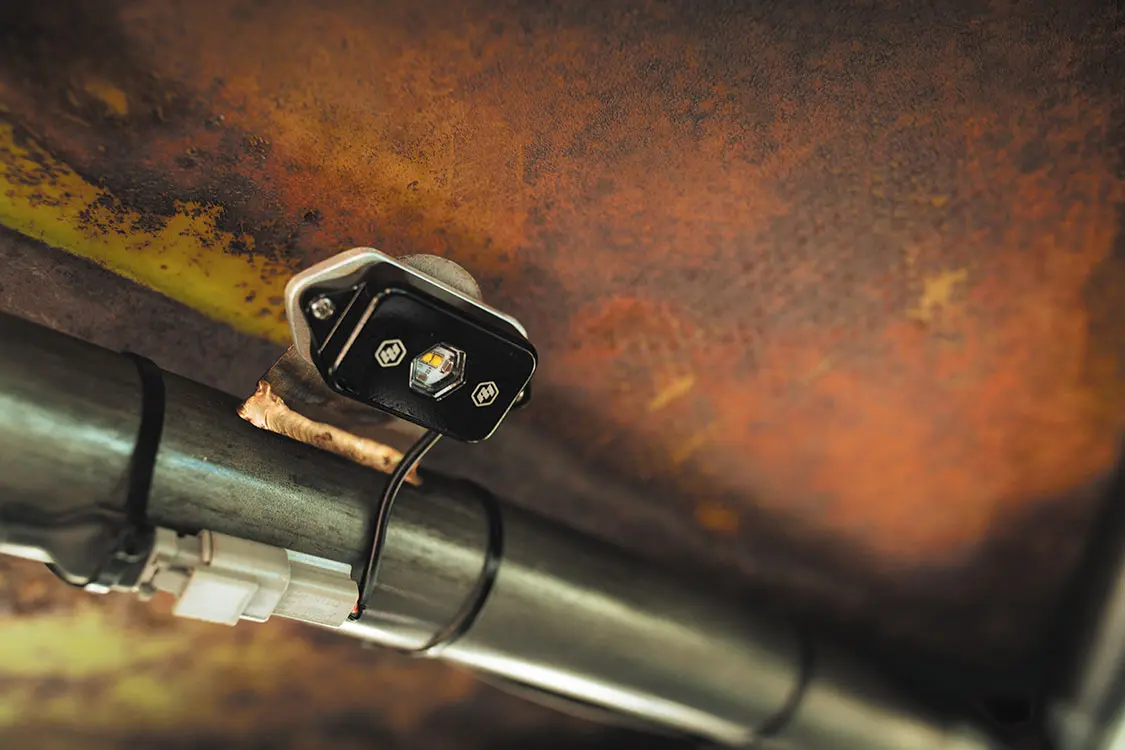
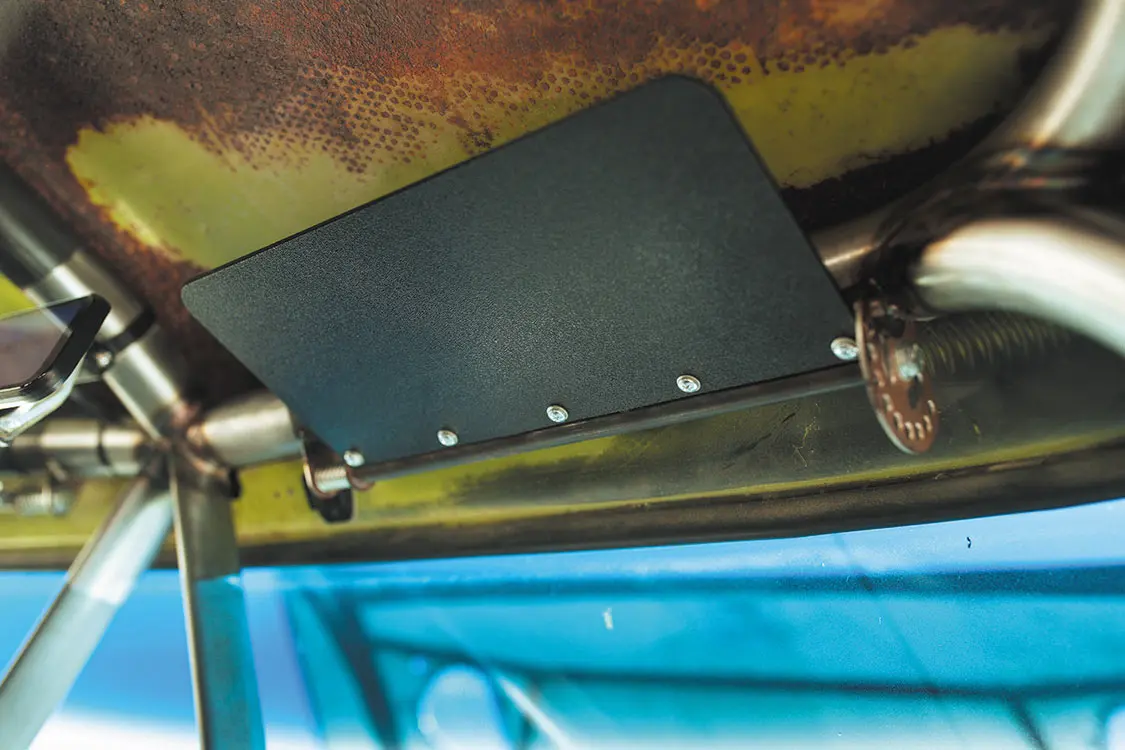

It wasn’t a simple task to pull off a conversion such as this, but it was much more than a simple body replacement. Just as much design time as fabrication hours were invested into this build, and it shows. Eric’s F-100 has unlimited handling capabilities, as it can be driven as hard and as fast as his eyes can process his surroundings whizzing past him. This is what a true collaboration of what like minds can accomplish. Eric and Morgan truly have solidified their friendship through the creation of a prerunning wonder truck that is almost too damn good to be true.
The guys ended up naming the Ford “Vivian” after Julia Robert’s character Vivian Ward in the movie “Pretty Woman.” For a full explanation, you might have to jump into Eric or Morgan’s DMs OR check out the Ford’s entire build series on MCD1’s YouTube account (@MorganClarkeDesign1).
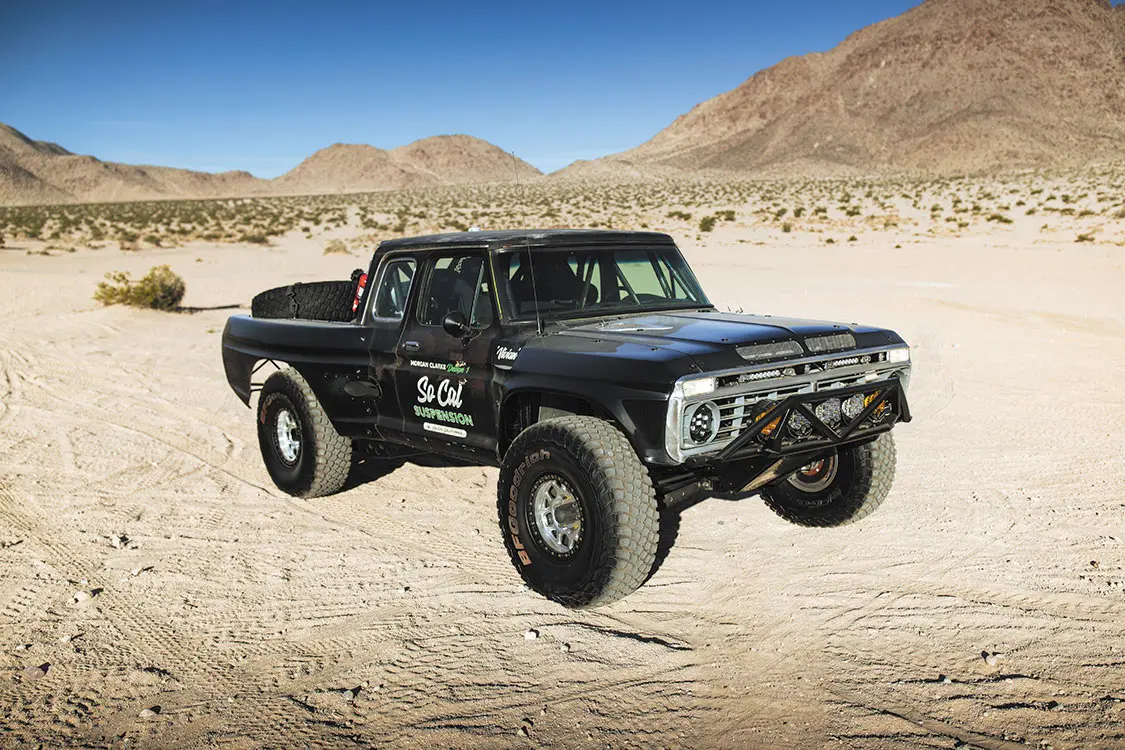
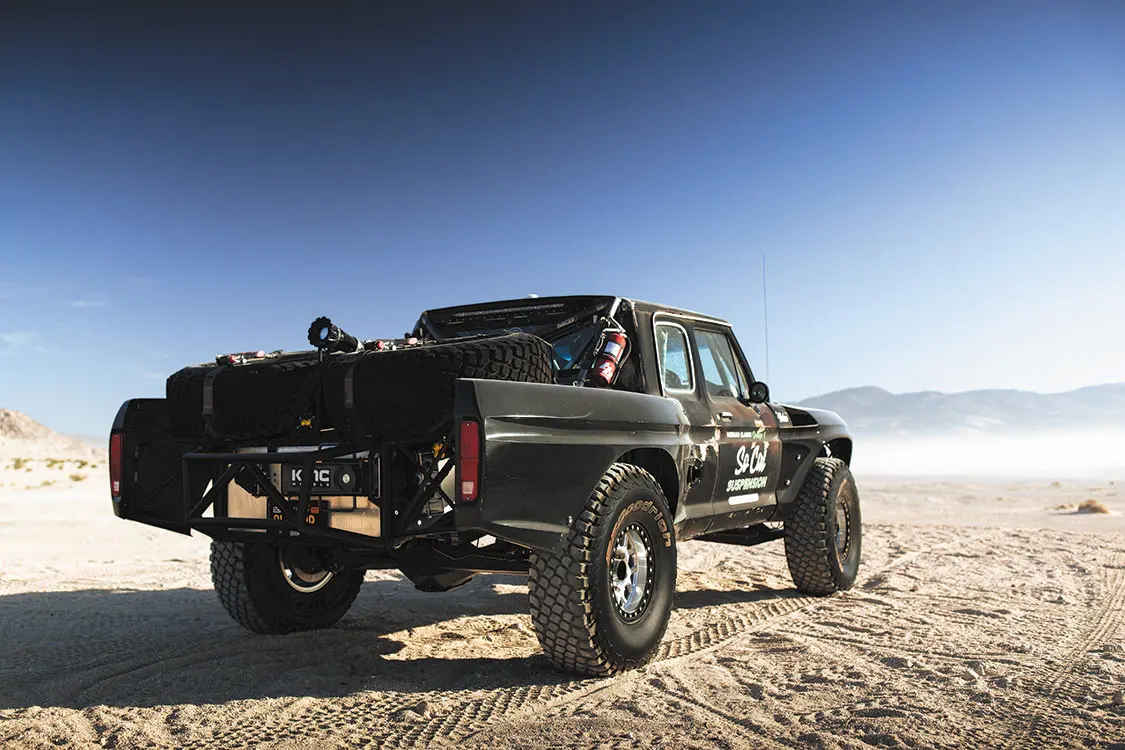
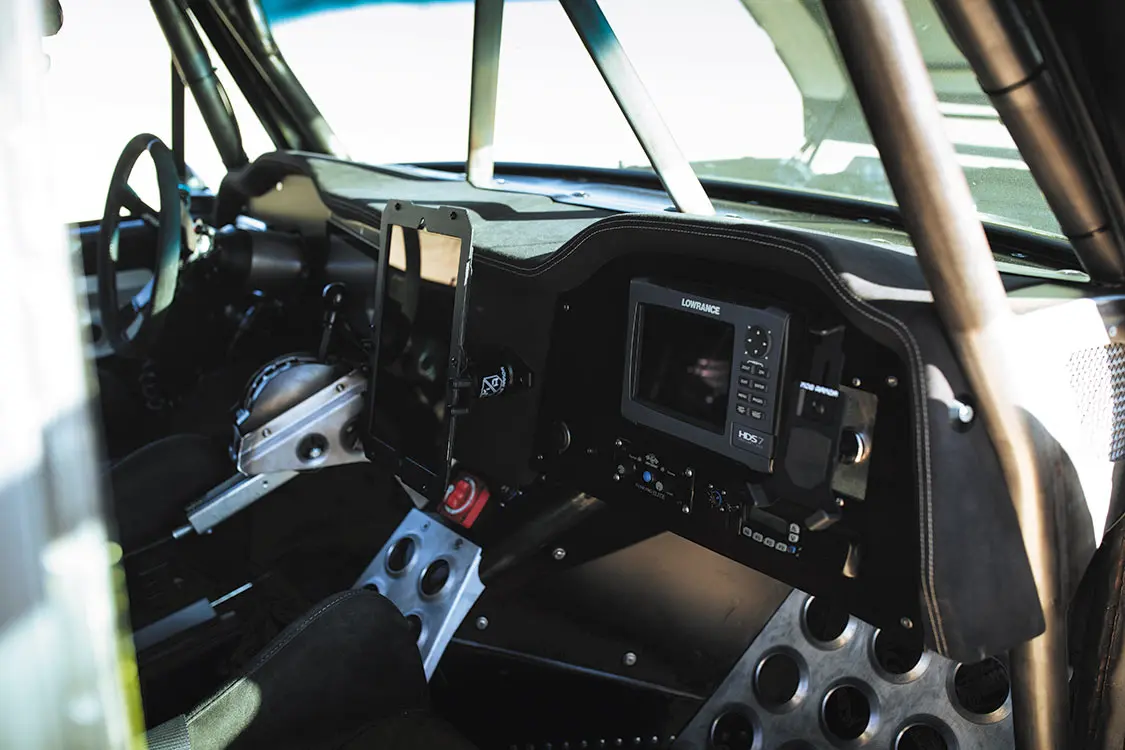
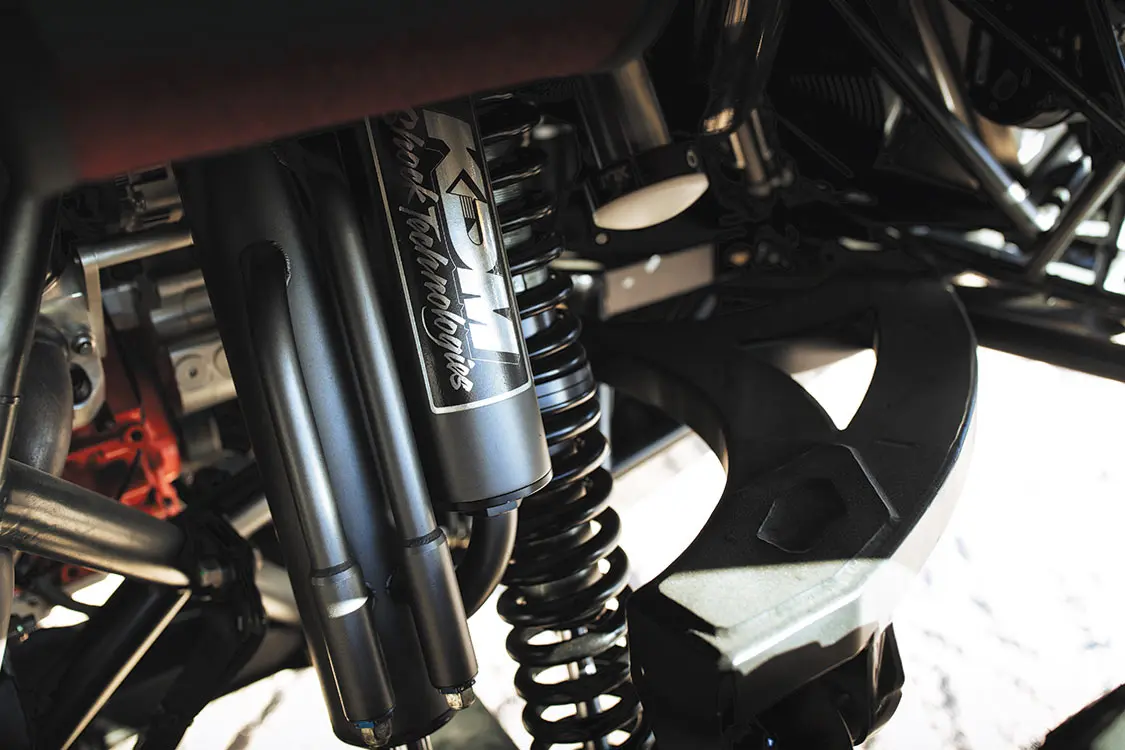
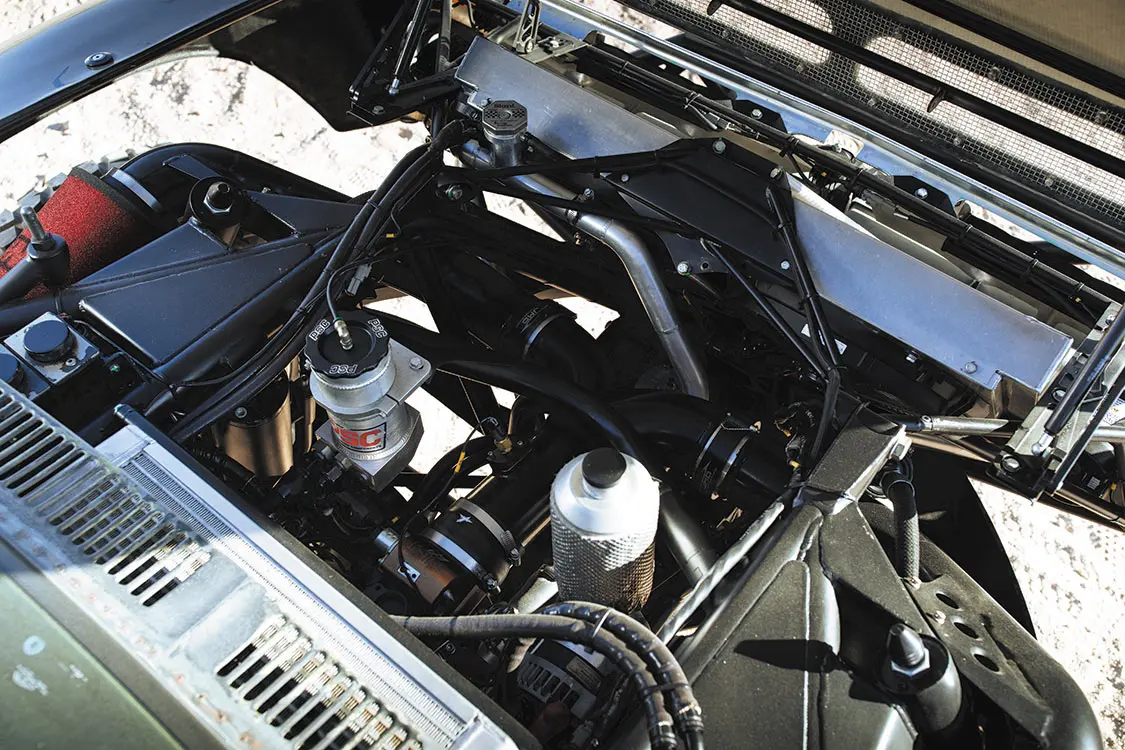
1974 Ford F-100
Owner:
Engine & Drivetrain:
Wheels & Tires:
Chassis & Suspension:
Body & Paint:
Exterior Accessories:
Editor’s Note: A version of this article appeared in TREAD Mar/Apr 2024.
Share Link